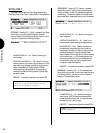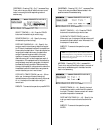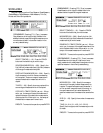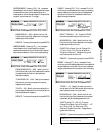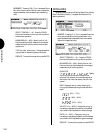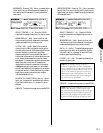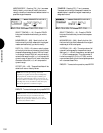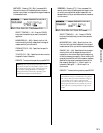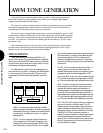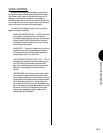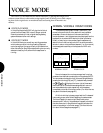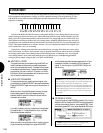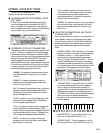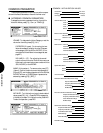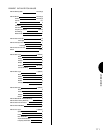
AWM TONE GENERATION
104
AWM TONE GENERATION
The W5/W7 creates sounds through Yamaha s exclusive AWM2 (2nd generation Ad-
vanced Wave Memory) tone generation process, which starts with high-quality digital
samples of actual instruments and sounds.
The W5/W7 s extensive on-board synthesizer and voice editing features give you unlim-
ited sound sculpting potential, and its intuitive user interface lets you access literally any
sound parameter in rarely more than two presses of a button.
The W5/W7 comes equipped with a large capacity waveform ROM full of preset AWM
sound elements 8Mbytes of 16-bit linear waveforms sampled at maximum 48kHz sampling
frequency. These preset sound elements are the
waves
which define the fundamental charac-
ter of the voice elements which form the building blocks that make up a W5/W7 stereo
Instrument voice .
There are hundreds of preset waves to choose from, and an optional external Expan-
sion Wave/Voice Board can be purchased separately and plugged into the W5/W7 s logic
board to increase the on-board capacity by another 4Mbytes.
AWM ELEMENTS
AWM elements are at the heart of the W5/W7 s rich,
dynamic sound quality. Only one AWM element is capable of
making a voice, but the W5/W7 lets you construct voices that
contain as many as four elements in order to obtain virtually
unlimited sonic and performance potential.
An AWM element is a wholly formed, complete musical
instrument sound unto itself. It is made up of an AWM sample,
or wave , plus pitch, filter, amplitude, LFO and controller
components, all of which can be manipulated in a variety of
ways.
ELEMENT 1
OSCILLATOR FILTER AMPLIFIER
LFO
Speed
Delay
Tune
Note Shift
Random
Scale
Level
Cutoff Freq.
Reso./Band
FEG AEG
PEG Range
Velocity Sensitivity
PMD FMD AMD
WAVE - The wave component plays back an AWM
sample and determines the pitch, thus defining the basic
characteristic of the tone. The basic tone of each element
is produced by an AWM sound wave or a digitally
sampled sound.
PITCH - The pitch component determines how the
pitch changes over time. The pitch change over time,
created by the pitch envelope generator (PEG), can be
controlled by key-on velocity for each note. The speed
of the pitch change can be adjusted across the keyboard.
Pitch modulation, or vibrato, can be created using the
low frequency oscillator (LFO), and the amount of
vibrato can be regulated by a controller. The pitch can
be controlled directly by the pitch bend wheel as well as
by aftertouch.
FILTER - The filter component can be controlled in a
variety of ways to modify the tone of the wave. For
example, each note can be given a fixed pattern of tonal
change by using the filter envelope generator (FEG).
Filter modulation, or wah-wah, can be created using the
LFO, and wah-wah depth can be regulated by a control-
ler. The tone can also be directly affected by a controller.
AMP - The amplifier component can be controlled in
various ways to control the volume of the sound. For
example, each note can be given a fixed pattern of
volume change by using the amplifier envelope genera-
tor (AEG), which can also be affected by key velocity.
Volume Modulation (tremolo) can be created using the
LFO, and tremolo depth can be regulated by a control-
ler. Volume can also be directly affected by a controller.
LFO - The LFO (Low Frequency Oscillator) component
can control the tone in a variety of ways. The LFO
creates a cyclically changing control signal that can be
used to create amplitude modulation (tremolo), pitch
modulation (vibrato), and filter modulation (wah-wah).
The W5/W7 s LFO can produce various
types
, or
shapes, of modulation waves, including triangle, square,
sine, and assorted sawtooth waves and others, plus
sample & hold, which produces a control signal whose
level will change randomly at intervals of time which
you can determine by speed.



